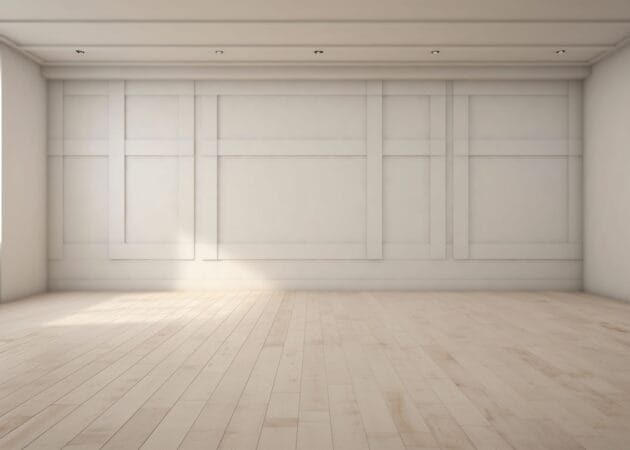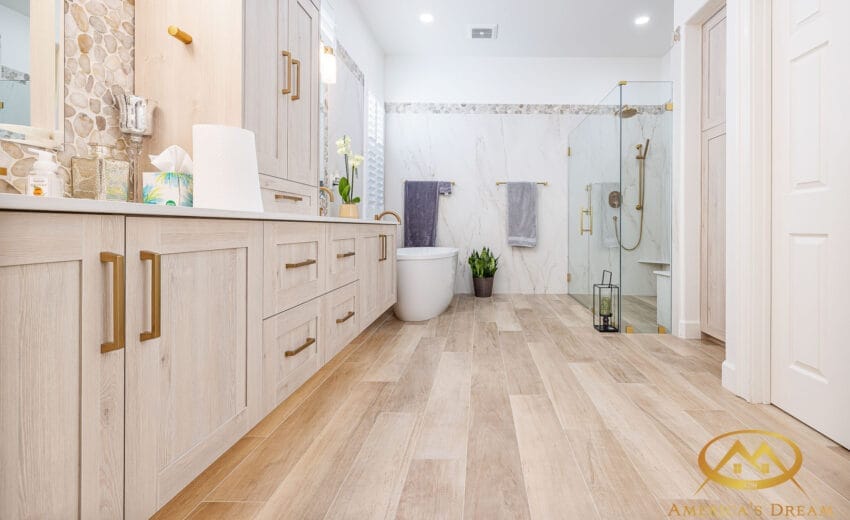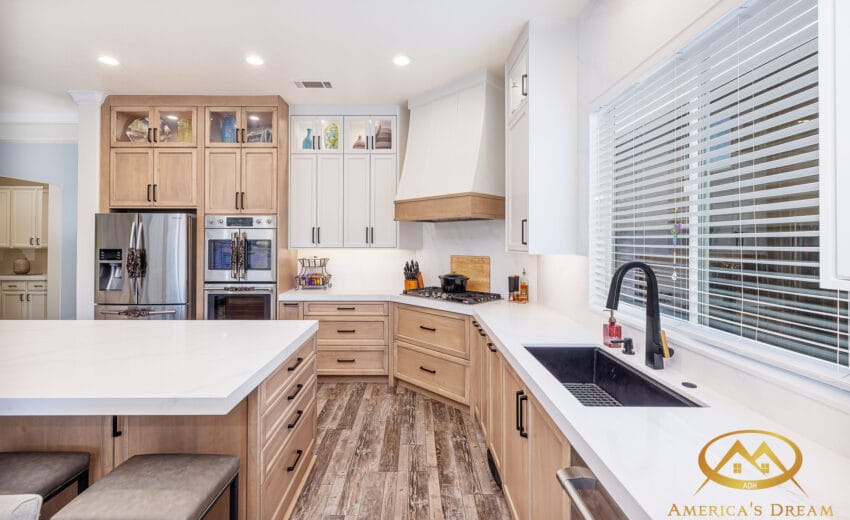There’s nothing like the natural warmth and beauty of wood floors, but over time, even the best floors can start looking worn. If your floors are showing signs of age—scratches, dullness, or faded color—it might be time for a wood floor refinishing. Whether you’re doing it yourself or hiring a pro, here’s everything you need to know to bring back the shine and give your floors a fresh, stunning look.
Why Refinish Your Wood Floors?
You might be wondering, Why bother with refinishing? Well, refinishing doesn’t just improve the appearance of your floors; it actually protects the wood and increases your home’s value. Refinishing hardwood floors removes surface scratches, fills gaps, and restores the rich color of the wood, making your floors look brand new.
Not only is this process far more cost-effective than replacing floors, but it also extends the life of your wood floors for many years to come.
Step 1: Decide Between DIY or Hiring a Pro
If you’re comfortable with tools and some hands-on work, you might consider DIY wood floor refinishing. However, if you’re dealing with deep scratches, uneven floors, or just prefer a flawless finish, hiring a professional may be the way to go.
Pro Tip: Search for refinish hardwood floors near me to find reputable professionals in your area who can tackle the job with expertise.
Step 2: Understanding the Cost to Refinish Wood Floors
The cost to refinish wood floors varies based on the size of the area, wood type, and the current condition of your floors. On average, the cost can range from $3 to $8 per square foot for a professional refinishing job. For a typical living room, that might add up to between $600 and $1,600.
If you’re on a budget, consider these options to keep costs down:
- DIY Sanding and Sealing: Rent a sander and purchase your own sealant.
- Restaining only: Sometimes, restaining hardwood floors is all that’s needed to refresh their color without a full refinishing process.
Curious about specific costs? Check out this helpful resource on wood floor refinishing cost for a detailed breakdown.
Step 3: Choose the Right Finish
Once your floors are sanded down, it’s time to pick a finish. There are several types of finishes to consider, each with its own look and durability:
- Water-based polyurethane: Dries quickly, has low odor, and leaves a natural, clear finish.
- Oil-based polyurethane: Adds a warm glow and is highly durable but takes longer to dry.
- Hardwax oil: Provides a matte finish and is eco-friendly, though it may need more frequent maintenance.
Want to achieve a specific look? Restaining hardwood floors can help you bring out rich colors, from dark espresso to light natural tones.
Step 4: Prepare Your Space for Refinishing
Before you begin, you’ll need to prepare the area. Remove all furniture, rugs, and anything that could be damaged by dust. If you’re working with a professional, they’ll likely take care of this for you, but for DIY projects, be sure to:
- Seal off nearby rooms: Prevent dust from spreading to other parts of your home.
- Ventilate the room: Open windows to keep fresh air flowing.
- Wear protective gear: Dust masks, eye protection, and gloves are a must.
Tip: If you’re refinishing floors in stages, start with high-traffic rooms to make the biggest impact on your home’s appearance.
Step 5: Sanding—The Key to a Smooth Finish
Sanding is the most critical part of refinishing, as it removes the old finish and creates a smooth surface for the new finish to adhere to. If you’re taking the DIY route, you’ll need to rent a drum sander and use progressively finer grits of sandpaper.
For best results:
- Start with a coarse grit to remove old finishes.
- Move to medium grit to smooth out rough patches.
- Finish with fine grit for a perfectly smooth surface.
If sanding seems intimidating, consider hiring a professional for just this step. It’s a great way to ensure a high-quality base for your new finish.
Check Our Recent Projects
Step 6: Apply the Finish for a Polished Look
Once your floors are sanded and cleaned of dust, it’s time to apply the finish. This is where your floors truly come back to life. Apply the finish evenly, working in small sections and following the grain of the wood. Depending on your choice of finish, you may need to apply multiple coats.
- Water-based finishes usually need 3-4 coats for maximum durability.
- Oil-based finishes may only require 2-3 coats but need a longer drying time.
Pro Tip: Avoid walking on your floors between coats to ensure a smooth, flawless surface.
Step 7: Let Your Floors Cure
After the final coat is applied, give your floors time to cure. This curing period can take a few days to a week, depending on the type of finish. Avoid placing heavy furniture back on your floors until they’re fully cured to prevent dents or scratches.
Ready to Refinish Your Wood Floors?
Refinishing your wood floors can be a rewarding project that transforms the look of your entire home. By following these steps—or working with a professional—you can achieve floors that look as good as new without the cost of replacement.
America’s Dream HomeWorks offers expert wood floor refinishing services, helping homeowners bring their floors back to life with beautiful, long-lasting finishes. Contact us today to get started!

















